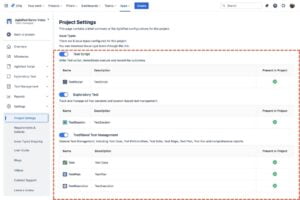In this article, you will find the overall abridgment of the Agile Manifesto. The Agile Manifesto, formulated in 2001, signifies a pivotal shift in the software development paradigm, offering a lightweight, responsive, and user-centric approach. So What is Agile Manifesto? The Agile Manifesto is a written record that delineates the fundamental values and principles of the Agile philosophy. Furthermore, it aims to assist development teams in optimizing their workflows and operating more sustainably and efficiently. Agile Manifesto stands on 4 foundational values and is driven by 12 underlying principles, aiming to create a balanced and sustainable development environment.
Table of contents
- The Four Core Values of the Agile Manifesto
- The 12 Principles of the Agile Manifesto
- 1. Customer Satisfaction through Early and Continuous Delivery
- 2. Welcome Changing Requirements
- 3. Deliver Working Software Frequently
- 4. Collaboration between Business People and Developers
- 5. Supportive, Trusting Environment
- 6. Face-to-face Interaction for Information Conveyance
- 7. Working Software as the Primary Measure of Progress
- 8. Maintain a Constant Pace Indefinitely
- 9. Excellence and Good Design
- 10. Simplicity and Maximizing Work Not Done
- 11. Self-Organizing Teams for Best Architecture, Requirements, and Design
- 12. Regular Reflection and Adjustment
- Use AgileTest to Get Started with Agile
- Conclusion
The Four Core Values of the Agile Manifesto
1. Individuals and Interactions over Processes and Tools
The first value prioritizes human interaction and collaboration over rigid processes and tools. While processes and tools are integral to project management and development, the Agile Manifesto emphasizes the importance of fostering a collaborative environment where individuals work cohesively to solve problems and innovate. Thus, the belief is that effective interaction among competent individuals is the cornerstone for finding solutions to unforeseen challenges and achieving project success.
2. Working Software over Comprehensive Documentation
This second value shifts the focus from extensive documentation to the delivery of functional software. It advocates for delivering software with essential features promptly and iteratively, enabling feedback from users and stakeholders early in the development process. Similarly, this approach ensures that the software developed is in tune with user needs and expectations, reducing the time and resources spent on extensive documentation that may not add value to the end user.
3. Customer Collaboration over Contract Negotiation
Agile underscores the importance of continuous customer involvement throughout the development process. In other words, this collaborative approach ensures that the evolving product aligns with customer expectations and that any changes in requirements are addressed promptly and effectively. Plus, it reflects a shift from contractual adherence to cooperation, fostering a deeper understanding of customer needs and a more adaptive development process.
4. Responding to Change over Following a Plan
Finally, flexibility and adaptability are central to Agile. Elaborating on that, even with a well-structured plan, the Agile Manifesto emphasizes the ability to adapt to changes and emerging realities in the project landscape. To clarify, this value promotes a dynamic development environment where learning and adjustments are integral, allowing for the continuous refinement of the project to meet evolving needs and challenges.
The 12 Principles of the Agile Manifesto
The 12 Principles serve as the foundational guidelines for methodologies encompassed by “The Agile Movement” These principles outline a culture that embraces change and prioritizes the customer at the core of all work undertakings. The essence is to create a synergistic alignment between development endeavors and business objectives, ensuring the delivery of optimum value to the customers.
1. Customer Satisfaction through Early and Continuous Delivery
The foremost principle is delivering valuable software early and continuously, prioritizing customer satisfaction and feedback.
2. Welcome Changing Requirements
Agile welcomes alterations in requirements at any stage of development, harnessing changes for the customer’s competitive advantage.
3. Deliver Working Software Frequently
The emphasis is on consistent, frequent delivery of functional software, preferring shorter timescales to enhance adaptability.
4. Collaboration between Business People and Developers
Business stakeholders and developers must collaborate daily to ensure alignment between business objectives and development activities.
5. Supportive, Trusting Environment
Building projects around motivated individuals, providing the environment and support they need, and trusting them to accomplish tasks effectively is pivotal in Agile.
6. Face-to-face Interaction for Information Conveyance
Direct, face-to-face conversation is the most efficient and effective method of conveying information within a development team.
7. Working Software as the Primary Measure of Progress
Progress in Agile is principally measured by the delivery of functional software, aligning development efforts with tangible outcomes.
8. Maintain a Constant Pace Indefinitely
Sustainable development is key in Agile, requiring a balanced pace that can be maintained indefinitely by all stakeholders.
9. Excellence and Good Design
Continuous attention to technical excellence and good design enhances agility by creating a robust, adaptable development framework.
10. Simplicity and Maximizing Work Not Done
Simplicity in design and development, focusing on what is necessary and maximizing the amount of work not done, is essential in Agile.
11. Self-Organizing Teams for Best Architecture, Requirements, and Design
Empowering self-organizing teams enhances the emergence of the best architectures, requirements, and designs, fostering innovation and adaptability.
12. Regular Reflection and Adjustment
Teams must regularly reflect on their effectiveness and adjust their behaviors and actions accordingly to improve performance and outcomes.
Use AgileTest to Get Started with Agile
AgileTest, developed by DevSamurai, is a transformative tool that revolutionizes Test Management within Jira, offering a comprehensive solution that supports every testing strategy, be it Agile or traditional. Specifically, this application provides an array of versatile configuration options, thereby allowing users to activate the essential features needed to integrate with their workflows seamlessly.
 Additionally, AgileTest enhances the ability to create and execute detailed test scripts and checklists instantly through its robust script editor, thereby refining the entire development lifecycle with methodologies like exploratory testing . Consequently, it accelerates release cycles and fosters continuous delivery through ad-hoc testing and optimized test session management.
Additionally, AgileTest enhances the ability to create and execute detailed test scripts and checklists instantly through its robust script editor, thereby refining the entire development lifecycle with methodologies like exploratory testing . Consequently, it accelerates release cycles and fosters continuous delivery through ad-hoc testing and optimized test session management.
Beyond offering traditional test management capabilities such as Test Case, PreCondition, Test Script, Test Sessions, Test Requirements, Test Executions, and extensive reporting, AgileTest positions itself as a commendable competitor to Xray & Zephyr. In this capacity, it facilitates effective management of requirements and defects and offers API and CLI integrations, ensuring synchronized operation with automated testing, BDD, CI/CD pipelines, and various DevOps tools. Such integration elevates the efficiency and performance of your software development processes significantly.
Moreover, AgileTest is unwavering in its commitment to enhancing its offerings with forthcoming features like Sprint Test , designed explicitly for the assessment of the Scrum team’s work sprint-by-sprint, and upcoming Automation features. These advancements provide open APIs and functionalities to support automated testing, and integration with CI/CD pipelines, and DevOps tools.
By strategically leveraging AgileTest by DevSamurai, organizations can optimize their testing management strategies remarkably, thereby ensuring the delivery of high-quality software products.
Conclusion
The Agile Manifesto, enriched with its 4 foundational values and 12 guiding principles, has innovatively reshaped the software development sector. It prioritizes individuals, collaboration, customer satisfaction, adaptability, and continuous improvement, creating an environment ripe for innovation, learning, and delivering valuable outcomes.
While the Agile Manifesto lays down a foundational framework, actualizing it necessitates a profound understanding and considerate application of its values and principles. Therefore, organizations must imbibe the spirit of Agile, cultivating an atmosphere where collaboration, adaptability, customer-centricity, and continuous improvement are inherent.
With the use of AgileTest and meticulous adherence to the values and principles of the Agile Manifesto, organizations can traverse the intricate landscape of software development more adeptly. As a result, they can produce products that align with users, adapt to evolving needs, and establish enduring value. The continual pursuit of learning and enhancement in Agile is not merely a route to superior software but a driving force for organizational metamorphosis and excellence.
To learn more about agile, check out this video!
For more information about agile testing, check out more videos from the AgileTest Academy series .
If you love the testing experiences, try our app on the Atlassian Marketplace!




